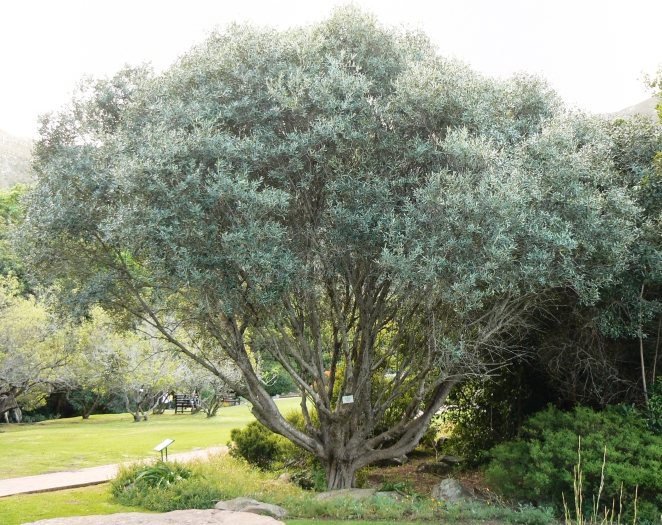African Olive
(Olea europaea subsp. cuspidata)
African Olive (Olea europaea subsp. cuspidata)
/
/

Abu Shawka
Public domain
Image By:
Abu Shawka
Recorded By:
Copyright:
Public domain
Copyright Notice:
Photo by: Abu Shawka | License Type: Public domain | License URL: https://creativecommons.org/public-domain/ | Uploader: MGA73bot2 | Publisher: Wikimedia Commons | Title: Olea_europaea_cuspidata-africana_Cape_Town.JPG | Notes: {{Information |Description ={{en|1=Omphalodes verna - Val Noci, Genova, Italy}} |Source ={{own}} |Author =[[User:Ettore Balocchi|Ettore Balocchi]] |Date =2008-04-15 |Permission = |other_versions = }} [[Category:Omphalode |











































































Estimated Native Range
Summary
Olea europaea subsp. cuspidata, commonly known as African Olive, is an evergreen tree with a dense, much-branched habit, typically varying in size from 2 to 15 meters (7 to 50 ft) high. Native to Eastern Africa, including Kenya, Tanzania, and Ethiopia, it thrives in a variety of habitats from woodlands to grasslands and rocky areas. This subspecies of olive is adapted to a Mediterranean climate with hot, dry summers and mild, wet winters.
The African Olive is valued for its silvery-green foliage and small, creamy-white flowers that bloom in clusters, followed by small, edible fruits that ripen to a blackish color. The fruit is used for the production of table olives and oil, while the sap can be used to make ink. It’s a popular choice for parks and gardens due to its ornamental qualities and adaptability to different soil types, though it requires well-drained soil and full sun exposure. It is drought-tolerant once established, making it suitable for xeriscaping. However, caution is advised as Olea europaea subsp. cuspidata can become invasive outside its native range, outcompeting local flora and altering ecosystems.CC BY-SA 4.0
The African Olive is valued for its silvery-green foliage and small, creamy-white flowers that bloom in clusters, followed by small, edible fruits that ripen to a blackish color. The fruit is used for the production of table olives and oil, while the sap can be used to make ink. It’s a popular choice for parks and gardens due to its ornamental qualities and adaptability to different soil types, though it requires well-drained soil and full sun exposure. It is drought-tolerant once established, making it suitable for xeriscaping. However, caution is advised as Olea europaea subsp. cuspidata can become invasive outside its native range, outcompeting local flora and altering ecosystems.CC BY-SA 4.0
Plant Description
- Plant Type: Tree
- Height: 25-40 feet
- Width: 25-40 feet
- Growth Rate: Moderate
- Flower Color: White, Green
- Flowering Season: Spring
- Leaf Retention: Evergreen
Growth Requirements
- Sun: Full Sun
- Water: Low, Medium
- Drainage: Slow
Common Uses
Bee Garden, Butterfly Garden, Drought Tolerant, Fragrant, Hedges, Low Maintenance
Natural Habitat
native to Eastern Africa, including Kenya, Tanzania, and Ethiopia, it thrives in a variety of habitats from woodlands to grasslands and rocky areas
Other Names
Common Names: Wild Olive, Brown Olive
Scientific Names: , Olea europaea subsp. cuspidata, Olea africana, Olea cuspidata, Olea europaea subsp. africana, Olea chrysophylla, Olea verrucosa, Olea ferruginea, Olea kilimandscharica, Olea europaea var. ferruginea
GBIF Accepted Name: Olea europaea subsp. cuspidata (Wall. & G.Don) Cif.